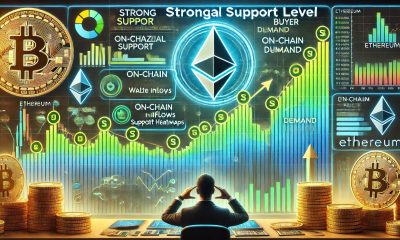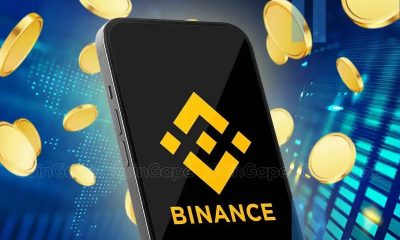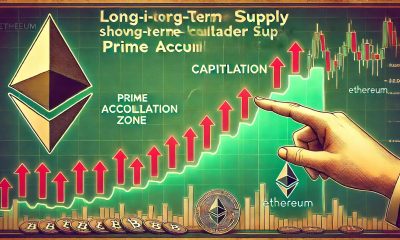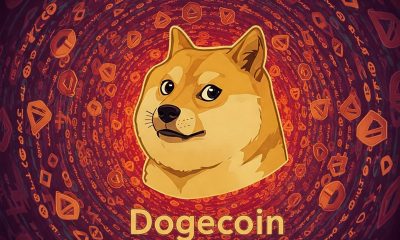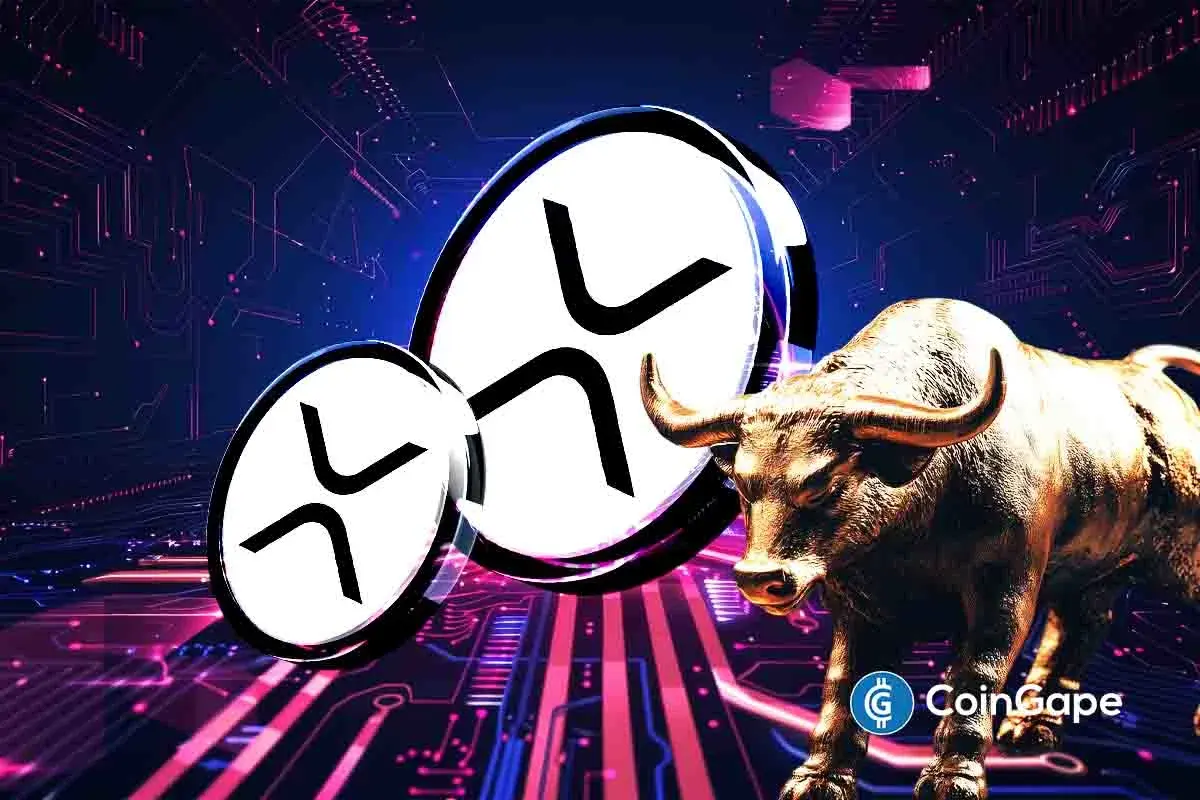Market
DAOs Need to Address Critical Issues for Long-Term Success
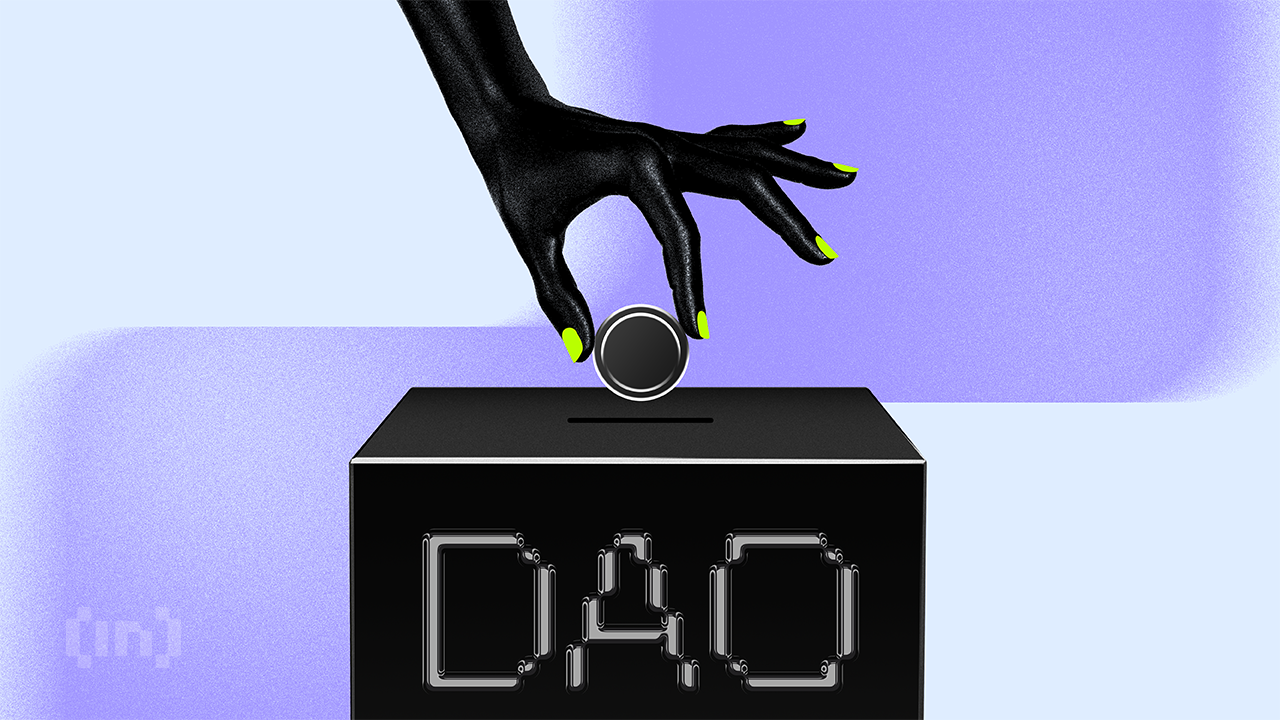
Decentralized autonomous organizations (DAOs) have become popular in Web3 as an alternative to traditional organizational structures. Their bottom-up decision-making, driven by token-based voting enforced and executed by smart contracts, aims to increase transparency and participation.
However, as DAOs grow beyond theoretical governance experiments, they face significant hurdles. BeInCrypto spoke with Danny Cooper, Venus Protocol’s Vanguard Team Lead, to understand how low voter turnout, large token holders, and decision paralysis hinder effective leadership.
A Promising Alternative
DAOs were once hailed as the future of governance, structures that could operate without centralized control, guided purely by code and community consensus. The vision was simple: a transparent, democratic system where every participant has a voice and makes decisions through token-based voting.
These organizations use a blockchain to facilitate self-enforcing rules or protocols. The blockchain’s smart contracts store these rules, while the network’s tokens incentivize users to safeguard the network and vote on regulations.
Since the first DAO launched on Ethereum in 2016, these organizations have entered the realms of venture capital, social initiatives, and public goods funding. But with their philosophy now implemented, their flaws have begun to surface.
DAOs often struggle with balancing decentralization and the need for effective leadership, raising questions about whether they are genuinely the ideal governance model or simply a stepping stone toward something more refined.
Lowered Voter Turnout
DAOs operate without a central authority, with governance decisions distributed among their members through code-based mechanisms. This decentralized structure was designed to empower members to participate in decision-making through token voting mechanisms.
However, there have been many instances where equally distributed voting power did not yield the expected results. Frequent voting on every issue can discourage participation.
“As DAOs grow, decision-making can indeed become cumbersome,” said Cooper.
Since many DAOs use referendum-style voting, they assume members will thoroughly research proposals. However, time constraints, lack of information, or simple disinterest can lead to low voter turnout or uninformed voting decisions.
Waiting for every DAO member to vote on a proposal can also slow the decision-making process, especially when an urgent solution is needed.
Segmenting voting matters by priority and topic and assigning them to specific delegates can solve this issue.
“Decentralized decision-making can scale with the implementation of sub-DAOs and layered governance systems, which delegate decision-making to smaller, focused groups. This approach reduces operational complexity while empowering specialized teams to act autonomously within defined boundaries. Advanced governance tooling and clear, codified processes ensure efficiency and coherence across a growing, decentralized community,” Cooper added.
Other options can remedy decreased participation, though they also come with risks.
Increased Centralization Among Major Players
To address low voter turnout, some DAOs allow less active participants to entrust their voting power to more informed members to increase overall engagement.
However, this system does not eliminate the risk of influence by the original owners. They could still acquire a majority of transferable voting tokens, allowing them to manipulate decisions that may not align with the DAO’s best interests.
Consequently, centralization risks also rise. In December 2024, the Cambridge Centre for Alternative Finance, a research institute based at the University of Cambridge, published a study examining the centralization level among decentralized finance (DeFi) projects.
The analysis focused on the following DAOs: AAVE, Compound Finance, Convex Finance, Curve Finance, Frax Finance, Instadapp, Lido, MakerDao, Rocket Pool, and Uniswap.

The study revealed that power within several leading DeFi DAOs is highly concentrated, with governance often dominated by a few influential players.
Researchers used the Gini coefficient to measure the DAOs’ governance token distribution and voting. This coefficient measures the inequality of governance token distribution within these protocols, with 1 representing maximum inequality and 0 representing perfect equality.

The Cambridge study found that these 10 DAOs had Gini coefficients ranging from 0.97 to 0.99 as of October 2024. For comparison, South Africa, the most income-unequal country in the world, had a Gini coefficient of 0.63 in 2024, according to Statista data.
MakerDAO had the highest coefficient of 0.99, while Rocket Pool had a coefficient of 0.97.
Whale Activity Compromises DAO Governance
The concentration of voting power among high-net-worth individuals can also marginalize smaller token holders, potentially leading to a situation in which a small group of influential actors effectively controls governance decisions.
“Whale influence in DAOs can skew governance outcomes,” said Cooper.
The concentration of power within some DAOs also raises concerns about potential rent-seeking behavior and conflicts of interest. When token holders are involved in multiple projects, their own interests may influence decisions within a particular DAO, potentially leading to outcomes that do not align with the best interests of the DAO.
A notorious example of whale risks in DAOs came to light in February 2023 when a Bubblemaps investigation revealed that Andreessen Horowitz controlled more than 4% of Uniswap’s UNI token supply.

Uniswap requires 4% of votes to pass any proposal, meaning that wallets owned by a16z can collectively change the outcome of any governance vote, challenging Uniswap’s claim of having a decentralized governance model.
The firm used its governance control that month when it leveraged a 15 million UNI token voting block to vote against a proposal to use the Wormhole bridge for Uniswap V3 deployment on the BNB Chain. a16z is apparently heavily invested in rival bridge platform LayerZero, which it favored for the deployment.
According to Cooper, DAOs must implement mechanisms to safeguard the organization from these types of manipulation in cases of governance attacks.
“Enhanced transparency through auditable voting records and the introduction of reputation-based deterrents penalize malicious actors, while layered safeguards like quorum thresholds prevent collusion and vote-buying from compromising governance integrity,” he said.
Ensuring that these mechanisms work will prove vital to avoid critical threats like vote-buying, whale activity, or collusion.
Scalability Issues
Many of the issues facing DAOs are directly or indirectly linked to the limitations in their scalability. These challenges pose significant risks to long-term growth and development.
As the number of participants and the volume of transactions increase, the DAO’s infrastructure may struggle to keep pace, potentially leading to delays in processing transactions and other inefficiencies.
Balancing the diverse interests of a DAO’s various stakeholders while simultaneously incentivizing desired behaviors and outcomes presents a significant operational challenge.
“Without central authority, setting long-term goals requires clear structure and alignment incentives. A clear roadmap, built collaboratively and tied to measurable milestones, ensures the DAO remains focused and unified across its decentralized community,” Cooper told BeInCrypto.
Similarly, the ongoing maintenance and upgrade of a DAO’s technical infrastructure, including smart contracts, voting mechanisms, and communication channels, is crucial for its smooth and effective operation.
In terms of accessibility, enhancing user experience requires developing and maintaining user-friendly tools. These could be intuitive voting platforms, efficient proposal management systems, and accessible decision-making interfaces.
Since one of the core principles of DAOs is a merit-based contribution, the organization should reward individuals based on the value they contribute.
Therefore, the successful operation of a DAO also requires careful consideration and management of its economic incentives. Initiatives could take the form of effective token distribution models, staking mechanisms, and reward structures.
Alignment with jurisdictional regulations will also be paramount.
Legal and Regulatory Challenges
The legal status of DAOs remains largely unclear within most jurisdictions. Their decentralized and autonomous nature presents challenges for traditional legal frameworks, typically designed for centralized entities with clearly defined legal structures.
As a result, most governments lack specific regulations and legal frameworks to address DAOs’ unique legal and operational characteristics.
Challenges include difficulties in designating legal entity status, ensuring transparency in registration, and addressing the operational complexities associated with decentralization, anonymity, and borderlessness. This ambiguity can erode investor confidence, hinder innovation, and create significant challenges in ensuring compliance with relevant regulations.
However, some jurisdictions have made progress. For instance, Wyoming passed a bill that provides a framework for DAOs of at least 100 members to become unincorporated nonprofit associations.
In 2021, the state passed the Decentralized Autonomous Organization Supplement Act, which extended Wyoming’s LLC laws to include DAOs and provided the first legal framework for their creation and management within the state.
“Emerging solutions include DAO-specific legal entities, such as Wyoming’s DAO LLC, and jurisdictional sandbox programs will enable DAOs to operate with legal clarity while maintaining the decentralized ethos. Self-regulation, backed by auditability and consistent community oversight, strengthens both accountability and credibility,” Cooper told BeInCrypto.
The United Arab Emirates (UAE) also introduced a structured legal framework for DAOs through the RAK Digital Assets Oasis (RAK DAO) last October.
The move also signaled a growing recognition of the potential that DAOs offer.
Fixing Issues Will Be Critical for a Sustainable Future
At large, DAOs offer a potential paradigm shift in corporate governance, presenting an alternative to traditional corporate structures. This decentralized model, with its emphasis on transparency and equitable participation, holds the potential to significantly impact the formation, management, and regulation of companies in the long term.
However, while their potential remains significant, several key challenges must be addressed to facilitate the widespread adoption of DAOs beyond current niches.
“To thrive in these areas, hybrid governance models that integrate expert advisory boards with community oversight will be critical, ensuring technical precision alongside decentralized values,” Cooper concluded.
To ensure the success of these governance models, stakeholders must address critical challenges, including the need for greater regulatory clarity, the development of a sustainable technological infrastructure, and the elimination of centralization risks.
Disclaimer
Following the Trust Project guidelines, this feature article presents opinions and perspectives from industry experts or individuals. BeInCrypto is dedicated to transparent reporting, but the views expressed in this article do not necessarily reflect those of BeInCrypto or its staff. Readers should verify information independently and consult with a professional before making decisions based on this content. Please note that our Terms and Conditions, Privacy Policy, and Disclaimers have been updated.
Market
BONK Symmetrical Triangle Squeeze: Is A Mega Breakout Imminent?

Bonk (BONK), one of the more energetic players in the meme coin space, is showing signs of a potentially explosive move as it coils tighter within a symmetrical triangle pattern. This classic chart formation, characterized by converging trendlines of lower highs and higher lows, often acts as a pressure booster for price action — the longer the squeeze, the more powerful the breakout tends to be.
The symmetrical triangle squeeze is a technical signal that often precedes sharp breakouts, and in BONK’s case, it couldn’t come at a more pivotal moment. With the broader meme coin market showing signs of strength and sentiment slowly shifting, a decisive move from this setup could define the next chapter for BONK. A breakout above the upper trendline might ignite fresh bullish momentum and open the door to new highs, while a break below support could trigger a sell-off toward lower key levels.
Bonk’s Recent Price Action: The Setup For A Big Move
According to a recent post by Whales_Crypto_Trading on X (formerly Twitter), Bonk is currently forming a symmetrical triangle pattern on the 1-hour chart. The price has just rebounded from the lower support trendline of the triangle, suggesting that buyers are stepping in to defend the structure and potentially build momentum for an upward breakout.
What makes this pattern particularly noteworthy is the potential upside. Whales_Crypto_Trading highlighted a profit target range of 70–80%, should BONK successfully break above the upper resistance trendline. With volatility tightening and volume starting to show signs of recovery, such a breakout could offer a substantial short-term trading opportunity.
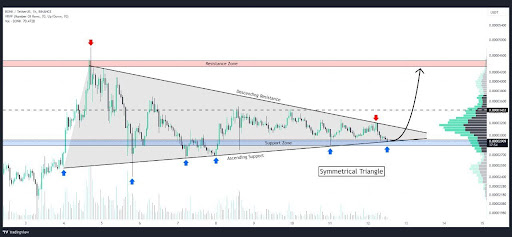
However, traders are advised to keep a close eye on volume confirmation and key breakout levels to avoid possible fakeouts, as symmetrical triangles can break in either direction.
Will The Meme Coin Explode Or Fizzle Out?
Bonk’s symmetrical triangle pattern has reached a critical stage, raising speculations about whether the meme coin will break free with force or lose steam under pressure. The recent bounce off the support trendline suggests bullish interest is still alive, and if momentum continues to build, BONK could be gearing up for a powerful breakout, potentially delivering gains in the 70–80% range as projected by traders.
However, it’s important to remain cautious. Symmetrical triangles are neutral by nature, meaning a breakdown is still on the table if buyers fail to push through resistance. The next few candles on the 1-hour chart could provide key confirmation of BONK’s direction.
In the end, BONK is approaching a defining moment. Whether it explodes into a bullish run or fizzles out into another rejection will largely depend on volume, sentiment, and the strength of the breakout. Traders should stay alert, as a big move may be closer than it seems.
Market
BANK Token Surges 150% After Binance Futures Listing

Lorenzo Protocol’s native token, BANK, has recorded a 150% price surge within six hours of its official launch.
The token’s rapid climb follows its listing on multiple platforms, including Binance’s Alpha Market and the launch of a BANKUSDT perpetual contract on Binance Futures with up to 50x leverage.
What is the New BANK Token on Binance Futures?
The Token Generation Event (TGE) for BANK took place today, April 18, via Binance Wallet, in partnership with PancakeSwap. Lorenzo Protocol raised $200,000 through the sale of 42 million BANK tokens—2% of the total supply—priced at $0.0048 each.
The token is now trading on PancakeSwap, Bitget, and CoinEx. Following its debut, BANK reached a market cap of approximately $22 million.
BANK is the governance and utility token for Lorenzo Protocol, a DeFi platform focused on enhancing Bitcoin liquidity.
The protocol allows users to earn yield on BTC without giving up custody. It uses financial primitives like Liquid Principal Tokens (LPTs) and Yield-Accruing Tokens (YATs).
According to its claims, BANK holders can stake their tokens to receive veBANK, which provides governance rights and a share of future emissions.

Also, Lorenzo Protocol is built on a Cosmos-based Ethermint appchain. It enables BTC restaking and interoperability with Bitcoin’s Layer 1. The design supports on-chain issuance and settlement of BTC-backed assets.
The listing of the BANK/USDT perpetual contract on Binance Futures adds further momentum to the token. Binance Futures is a derivatives platform that allows users to trade perpetual contracts with high leverage.
Binance has historically preferred new tokens on the BNB chain for early futures trading. BANK’s sharp price increase and rapid market integration highlight strong early interest in Lorenzo Protocol’s approach to BTC-based DeFi infrastructure.
Currently, it’s far-fetched to project whether the exchange will list this newly launched token. However, Binance’s new community voting on token listing has offered positive hopes for small market cap projects.
Disclaimer
In adherence to the Trust Project guidelines, BeInCrypto is committed to unbiased, transparent reporting. This news article aims to provide accurate, timely information. However, readers are advised to verify facts independently and consult with a professional before making any decisions based on this content. Please note that our Terms and Conditions, Privacy Policy, and Disclaimers have been updated.
Market
Asia’s First XRP Investment Fund is Here, Backed by Ripple
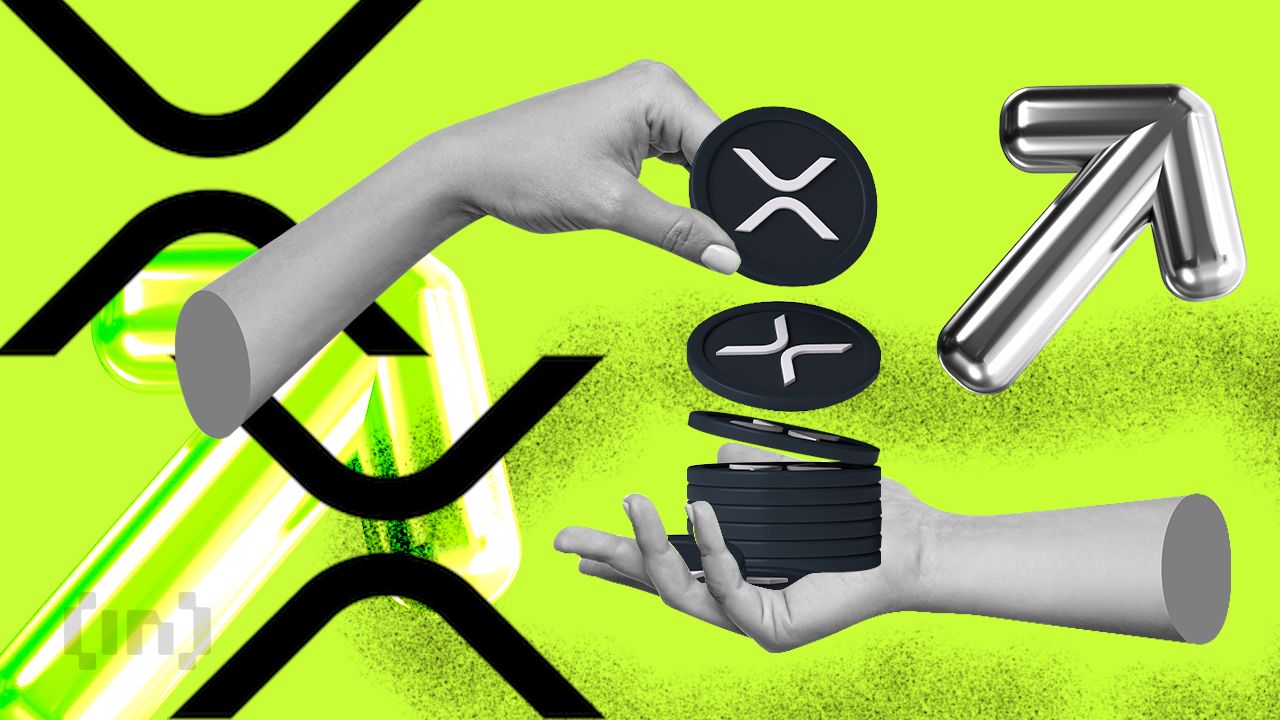
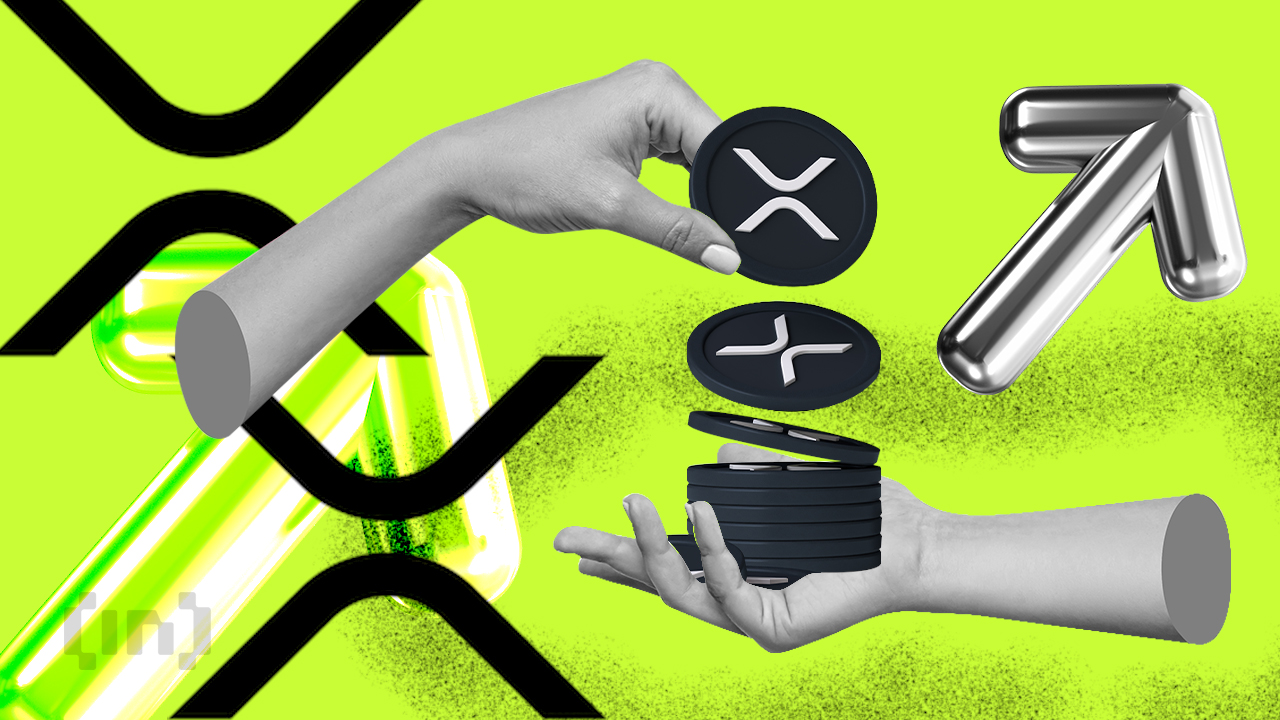
HashKey Capital has launched the HashKey XRP Tracker Fund, the first fund in Asia focused exclusively on tracking the performance of XRP.
The fund is now open to professional investors. Ripple is backing the initiative as an early investor.
Institutional Interest in XRP Investment Continues to Grow
According to HashKey, XRP offers a faster and more cost-effective alternative to traditional cross-border payment systems. The new tracker fund aligns with HashKey Capital’s goal of connecting conventional finance with digital asset markets.
The fund allows investors to subscribe using either cash or in-kind contributions. Investors can redeem or subscribe to shares on a monthly basis.
CF Benchmarks, known for its role in global ETF markets, will provide the fund’s benchmark.
“XRP stands out as one of the most innovative cryptocurrencies in today’s market, attracting global enterprises who use it to transact, tokenize, and store value. With the first XRP Tracker Fund available in the region, we simplify access to XRP, catering to the demand for investment opportunities in the very best digital assets,” said Vivien Wong, Partner at HashKey Capital.
Most recently, Ripple acquired prime brokerage platform Hidden Road for $1.25 billion. It was one of the largest acquisition deals in the crypto and blockchain space.
Earlier today, Hidden Road secured a broker-dealer license from the Financial Industry Regulatory Authority (FINRA).
Meanwhile, XRP continues to gain traction with institutional investors. Standard Chartered recently forecast that XRP could surpass Ethereum by 2028, citing increased demand for efficient cross-border payment solutions and growing disruption in global trade.
“XRP is uniquely positioned at the heart of one of the fastest-growing uses for digital assets – facilitation of cross-border and cross-currency payments. In this way, XRPL is similar to the main use case for stablecoins such as Tether. This stablecoin use has grown 50% annually over the past two years, and we expect stablecoin transactions to increase 10x over the next four years. We think this bodes well for XRPL’s throughput growth, given the similar use cases for stablecoins and XRPL,” Geoff Kendrick, Standard Chartered’s Head of Digital Assets Research, told BeInCrypto.
Interest in XRP ETFs is also increasing. Teucrium Investment Advisors recently received NYSE Arca approval for the Teucrium 2x Long Daily XRP ETF (XXRP), the first leveraged XRP ETF in the United States.
Also, attention is now turning to spot XRP ETFs. Grayscale and 21Shares are both awaiting decisions from the SEC on their XRP-based products.
The SEC has up to 240 days to review the Grayscale XRP Trust and the 21Shares Core XRP Trust, with final deadlines set for October 18 and 19, 2025.
XRP’s price has declined by nearly 20% over the past month, but institutional confidence remains high.
Ripple recently confirmed progress in resolving its long-standing legal battle with the SEC. A joint motion to pause court proceedings was approved, giving both parties 60 more days to finalize a settlement.
Disclaimer
In adherence to the Trust Project guidelines, BeInCrypto is committed to unbiased, transparent reporting. This news article aims to provide accurate, timely information. However, readers are advised to verify facts independently and consult with a professional before making any decisions based on this content. Please note that our Terms and Conditions, Privacy Policy, and Disclaimers have been updated.
-

 Ethereum23 hours ago
Ethereum23 hours agoEthereum Whales Offload 143,000 ETH In One Week – More Selling Ahead?
-

 Market16 hours ago
Market16 hours agoEthereum Price Fights for Momentum—Traders Watch Key Resistance
-

 Market22 hours ago
Market22 hours agoCrypto Ignores ECB Rate Cuts, Highlighting EU’s Fading Influence
-
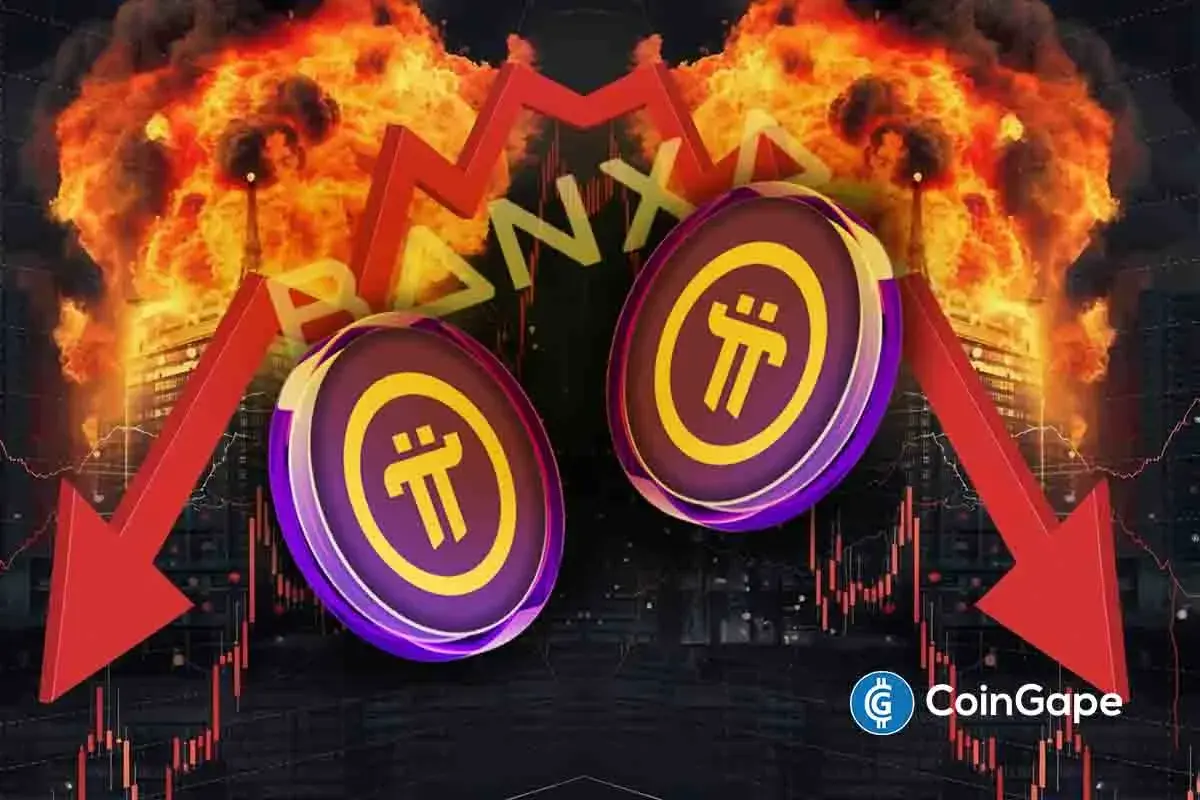
 Altcoin15 hours ago
Altcoin15 hours agoExpert Predicts Pi Network Price Volatility After Shady Activity On Banxa
-
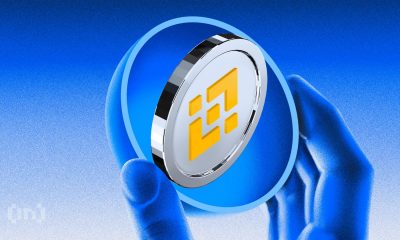
 Market21 hours ago
Market21 hours agoBinance Leads One-Third of the CEX Market in Q1 2025
-

 Altcoin20 hours ago
Altcoin20 hours agoDogecoin Price Breakout in view as Analyst Predicts $5.6 high
-
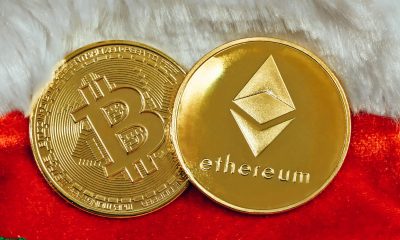
 Ethereum19 hours ago
Ethereum19 hours agoEthereum Investors Suffer More Losses Than Bitcoin Amid Ongoing Market Turmoil
-

 Altcoin19 hours ago
Altcoin19 hours agoTron Founder Justin Sun Reveals Plan To HODL Ethereum Despite Price Drop




